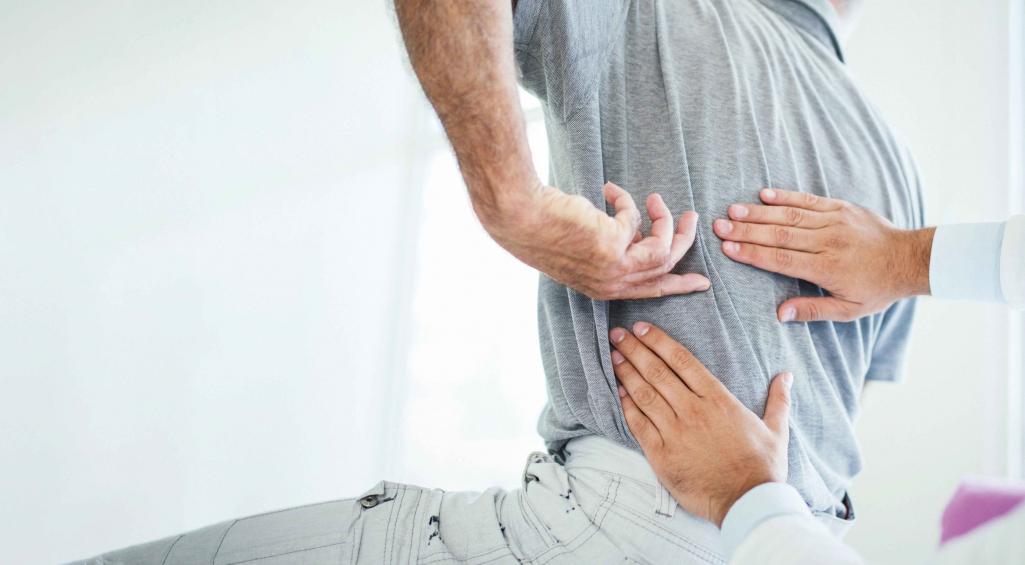
Back pain
Everyone has suffered, either occasionally, or frequently, from back pain. In this issue’s dossier, we explain the causes, symptoms and treatments for this widespread ailment all over our society with the aid of one of the top specialists, Dr. Francisco Kovacs, from the Back Unit at the Hospital HLA Universitario Moncloa and director of the Spanish Network of Back Pain Researchers.
Cristina Puig
Back pain has formed part of our species for time immemorial, but nowadays, the disability and cost on a worldwide scale has become much more significant. 90% of the population suffers or has suffered from back and neck pain at some point in their lives. In the large majority of cases, the cause lies in the poor functioning of the muscles, which is not surprising if we look at the increasingly sedentary lifestyle of both adults and children. And the forecasts are not very encouraging: “Over 70% of children do not reach the minimum recommendation of one hour of physical activity per day, meaning that it is likely that cases of back pain due to muscle problems will increase”, Dr. Francisco Kovacs, one of the top researchers in the field of back and neck pain warns.
Regarding the adult population, all over the world, low back pain (affecting the lower part of the back) is already acknowledged as the main cause of disability, with this being understood as the impossibility of performing normal activity for medical reasons, along with neck pain in fourth place, as is shown in a recent study funded by the Melinda and Bill Gates Foundation.
Research is essential
It is in the hands of the patients themselves to adopt a more active lifestyle in order to look after their backs. “We are not designed to spend six or eight hours sitting down,
there-fore we must ensure that we carry out some physical activity during the working day,” Dr. Kovacs recommends. But the struggle against back pain is also being fought in scientific research and clinical practice. Over the past few decades, there has been a real evolution in the knowledge of this field. Much of what doctors learnt at medical school is no longer valid. Without any doubt, scientific and technical developments are behind the drastic changes that have occurred when prescribing treatments. We just have to look back at some of the beliefs that have fallen by the wayside, such as the usefulness of complete bed rest, using a very hard mattress.
The progress reached thanks to scientific research shows very good news for those suffering from back pain, as this is allowing more precise and individualised treatments to be offered. In turn, a crucial lesson may be learnt for medical practice: everything must be carefully checked, even when it appears obvious. “It is worth it for the health of the patients,” Dr. Kovacs concludes.
DEBUNKED MYTHS
1. Rest. For years complete bed rest was recommended for episodes of back pain. Now, this treatment has been shown to be mistaken and counterproductive: it worsens the muscle tone and irrigation to the muscles, prolonging the pain and increasing the risk of it coming back in the future.
2. Painkillers. Until five years ago it was assumed that paracetamol was valid for treating low back pain. However, clinical trials have revealed that it is useless for this purpose, as affirmed by Dr. Kovacs. According to these trials, anti-inflammatory drugs such as ibuprofen (always with a medical prescription) can help with this pain.
3. Scoliosis. Clinical studies performed in recent years have refuted the belief that this type of curvature of the spine in children or young people increases the risk of back pain and must be operated on to prevent it. Actually, according to Dr. Kovacs, “in most cases idiopathic scoliosis is nothing more than a personal characteristic without any clinical significance.”
For further information:
El libro de la espalda. (Ed. Martínez Roca).
Author: Dr. Francisco Kovacs
www.espalda.org








